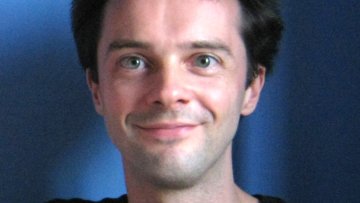Are CAT(0) spaces determined by their boundaries?
Abstract
Boundaries of hyperbolic spaces have played a key role in low dimensional topology and geometric group theory. In 1993, Paulin showed that the topology of the boundary of a (Gromov) hyperbolic space, together with its quasi-mobius structure, determines the space up to quasi-isometry. One can define an analogous boundary, called the Morse boundary, for any proper geodesic metric space. I will discuss an analogue of Paulin’s theorem for Morse boundaries of CAT(0) spaces. (Joint work with Devin Murray.)
Link cobordisms and TQFTs in Heegaard Floer homology
Abstract
We will discuss a construction of cobordism maps on the full link complex for decorated link cobordisms. We will focus on some formal properties, such as grading change formulas and local relations. We will see how several expressions for mapping class group actions can be interpreted in terms of pictorial relations on decorated surfaces. Similarly, we will see how these pictorial relations give a "connected sum formula" for the involutive concordance invariants of Hendricks and Manolescu.
Fully extended twisted field theories
Abstract
After giving an introduction to functorial field theories I will explain a natural generalization thereof, called "twisted" field theories by Stolz-Teichner. The definition uses the notion of lax or oplax natural transformations of strong functors of higher categories for which I will sketch a framework. I will discuss the fully extended case, which gives a comparison to Freed-Teleman's "relative" boundary field theories. Finally, I will explain some examples, one of which explicitly arises from factorization homology and whose target is the higher Morita category of E_n-algebras, bimodules, bimodules of bimodules etc.
2-Segal spaces and higher categorical bialgebras
Abstract
An efficient way to descibe binary operations which are associative only up to coherent homotopy is via simplicial spaces. 2-Segal spaces were introduced independently by Dyckerhoff--Kapranov and G\'alvez-Carrillo--Kock--Tonks to encode spaces carrying multivalued, coherently associative products. For example, the Waldhausen S-construction of an abelian category is a 2-Segal space. It describes a multivalued product on the space of objects given in terms of short exact sequences.
The main motivation to study spaces carrying multivalued products is that they can be linearised, producing algebras in the usual sense of the word. For the preceding example, the linearisation yields the Hall algebra of the abelian category. One can also extract tensor categories using a categorical linearisation procedure.
In this talk I will discuss double 2-Segal spaces, that is, bisimplicial spaces which satisfy the 2-Segal condition in each variable. Such bisimplicial spaces give rise to multivalued bialgebras. The second iteration of the Waldhausen S-construction is a double 2-Segal space whose linearisation is the bialgebra structure given by Green's Theorem. The categorial linearisation produces categorifications of Zelevinsky's positive, self-adjoint Hopf algebras.
Heegaard Floer homology and deformation of curve singularities
Abstract
Knots and links naturally appear in the neighbourhood of the singularity of a complex curve; this creates a bridge between algebraic geometry and differential topology. I will discuss a topological approach to the study of 1-parameter families of singular curves, using correction terms in Heegaard Floer homology. This is joint work with József Bodnár and Daniele Celoria.
As part of our series of research articles focusing on the rigour and intricacies of mathematics and its problems, Oxford Mathematician James Sparks discusses his latest work.
"Two great successes of 20th century theoretical physics are Quantum Field Theory and General Relativity.
14:30
The 2017 Problem Solving Squad
Abstract
Each year Prof. Trefethen gives the Problem Solving Squad a sequence of problems with no hints, one a week, where the solution of each problem is a single real number to be computed by any method available. We will present this year's three problems, involving (1) an S-shaped bifurcation curve, (2) shortest path around a random web, and (3) switching a time-varying system to maximize a matrix norm.
The 14 students this year are Simon Vary plus InFoMM cohort 2: Matteo Croci, Davin Lunz, Michael McPhail, Tori Pereira, Lindon Roberts, Caoimhe Rooney, Ian Roper, Thomas Roy, Tino Sulzer, Bogdan Toader, Florian Wechsung, Jess Williams, and Fabian Ying. The presentations will be by (1) Lindon Roberts, (2) Florian Wechsung, and (3) Thomas Roy.
14:30
New approaches for global optimization methods
Abstract
We present some dimensionality reduction techniques for global optimization algorithms, in order to increase their scalability. Inspired by ideas in machine learning, and extending the approach of random projections in Zhang et al (2016), we present some new algorithmic approaches for global optimisation with theoretical guarantees of good behaviour and encouraging numerical results.


